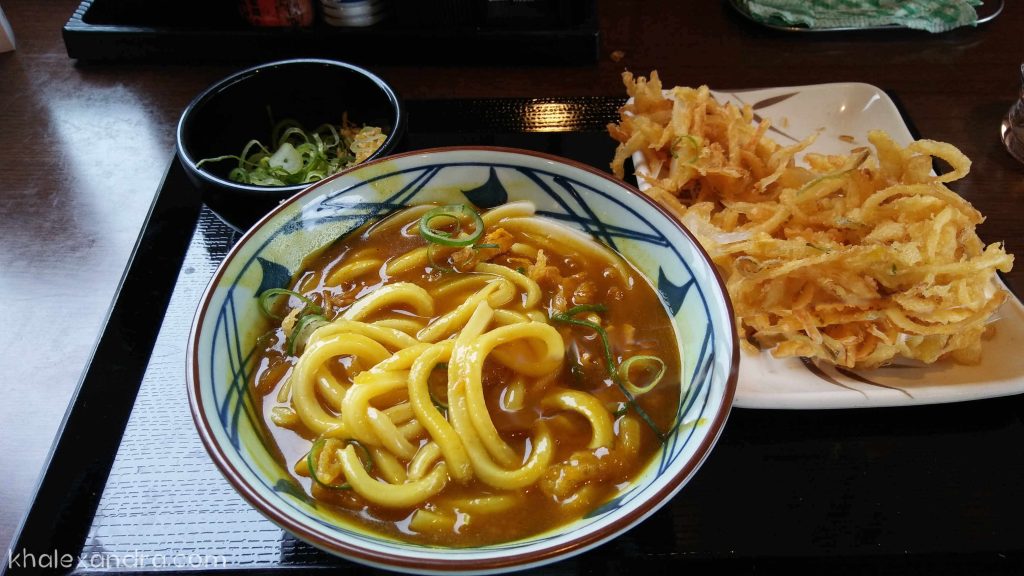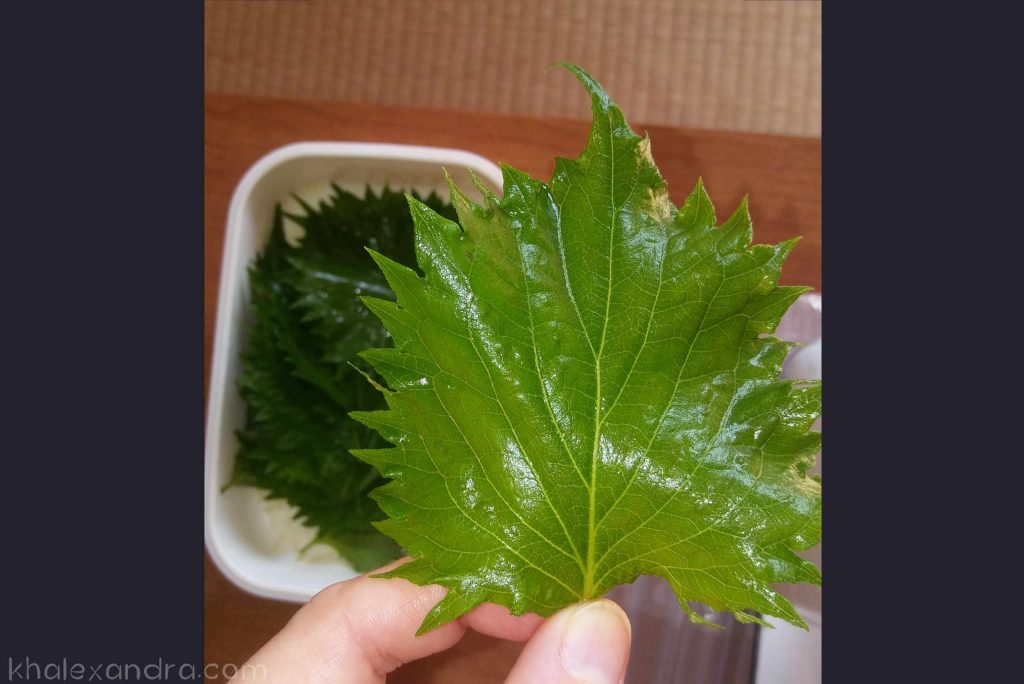Twelve Must Try Foods of Japan
This post may contain affiliate links, which means I'll receive a small commission if you purchase through my links, at no extra cost to you. Please read full disclosure for more information. Your support is appreciated!.
Sushi (寿司)

When Japanese cuisine is mentioned, sushi is perhaps the first food that comes to mind. There are so many other delicious Japanese dishes, but sushi became one of my favorites (to my surprise).
Sushi usually consists of raw fish or meat rolled in a short-grained rice that holds its shape well. If you don’t like the idea of raw fish, there are many other types of sushi you can try, including vegetable or cooked crabmeat or shrimp sushi – such as the shrimp tempura sushi rolls pictured above or these California Rolls.
Ramen (ラーメン)

There are so many varieties of ramen, and many ramen shops in Japan. Despite that ramen is a soup, it is usually very filling. The one pictured above had a nice slice of fried chicken on top. One of the most interesting ramen flavors I had was charcoal ramen.
Tonkatsu Ramen is a popular and easy to find flavor.
Udon (うどん)

Udon are made of wheat flour and are usually thicker than ramen noodles, but can come in a variety of sizes and shapes. The udon I enjoyed in Japan were very chewy and delicious. Some udon shops let you watch the process of noodle-making and they pair greatly with tempura (pictured at the right). Sometimes tempura crumbles can be added as a topping to the udon, along with chopped green onion.
Tempura (天ぷら)

Tempura is very popular in Japan and is said to have been brought to Japan by Portugal. A batter of flour, eggs, and water is used to deep fry many kinds of veggies and seafood (sushi rolls can also be dipped in tempura batter and deep fried). The batter is very simple to make, but tempura is easily found in grocery stores as well.
Yakisoba (焼きそば)

Yakisoba means “fried noodles.” The sauce can be sweet and savory, usually with Worcestershire, ketchup, soy sauce, and sugar. The yakisoba pictured above are topped with pink pickled ginger (Kizami Shoga [刻み生姜]). Many yakisoba are drizzled also with Japanese style mayonnaise.
Here are some simple Yakisoba recipes, including Italian Sausage Yakisoba, Veggie Chunks Yakisoba, and Mayo Yakisoba.
Soba (そば)

Just to be clear, yakisoba and soba are not necessarily made with the same noodles. Soba noodles are generally made with buckwheat flour. They are served hot or cold, and they have a texture more similar to spaghetti than ramen, yakisoba, or udon.
Gyoza (餃子)

Gyoza are dumplings that are very versatile – they can be deep fried, pan fried, or boiled and contain any number of tasty ingredients like shiso below. Utsunomiya city in Tochigi prefecture holds an annual gyoza festival and is known as the gyoza capital of Japan due to the numerous gyoza shops, all with their own unique flavor or style. The gyoza pictured above are from a rural restaurant on the outskirts of Utsunomiya.
Shiso (紫蘇, しそ)

Originally from China, Shiso or Perilla is an herb that grows plenteously in Japan. It is also called Beefsteak in the USA! It tends to overtake the other plants around it, but it has a delicious flavor reminiscent of basil with citrus undertones (doesn’t that sound fancy??).
Many times you will see Shiso or Perilla on menus in Japan, as a ramen broth flavor, or a gyoza filling.
Okonomiyaki (お好み焼き)

Okonomiyaki pancakes reportedly originated in Osaka, but now, different areas of Japan boast their own flavor and style of okonomiyaki. These are savory pancakes, generally fried with cabbage, wheat flour, and other veggies, then topped with a savory sauce, mayonnaise and shaved bonito and seaweed. Many okanomiyaki restaurants in Japan will cook them in front of you. Some okonomiyaki even contain noodles.
See the differences between Hiroshima Style Okonomiyaki and Kansai Style Okonomiyaki.
Here is a simple recipe for 5-Ingredient Okonomiyaki.
Tonkatsu (とんかつ) and Kara-age (唐揚げ)

Although many foods are breaded and fried like this, people usually refer to fried chicken as Kara-age. Breaded and fried pork is called Tonkatsu. When in Japan, you can purchase these at Lawson’s and 7-11, but there are also restaurants exclusively serving these fried delicacies.
Here is a recipe for Japanese Kara-age that is very simple to make.
And for Dessert:
Mochi (もち)

Mochi refers to sticky cakes made from sweet glutinous rice flour. Traditionally, the filling is a sweet red bean paste. However, some mochi, such as sakura (cherry blossom) mochi, have a filling of sweet, creamy goodness!!
Matcha Panna Cotta (抹茶 パンナコッタ)

This is a smooth panna cotta (パンナコッタ) with a lovely matcha tea (抹茶) topping. These kinds of desserts are popular in Japan, reminiscent of Europe meeting East Asia.
Oyatsu (お八つ)

Oyatsu is a word for “snack” that you can find in every convenience store in Japan (there seems to be one on every corner)! Not only can you find lunch, like rice balls (onigiri) like the pickled plum onigiri pictured above, but you can find sweets (okashi [お菓子]) as well, like the sweet steamed custard cake pictured below.

If you would like to read more on Japanese food, see my post on Japan Food Ingredients!
